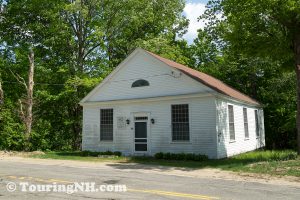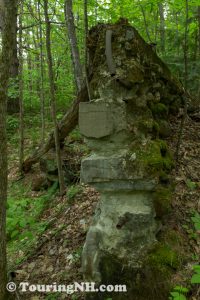Recently, while researching a case, I stumbled across Hill, a small town in Merrimack County, New Hampshire. Hill was originally formed as New Chester in 1754, and was incorporated in 1778. The town was renamed Hill in honor of New Hampshire Governor Isaac Hill in 1837. Hill was part of Grafton County until 1868, when it became part of Merrimack County.
In 1941, the entire town of Hill was relocated.[1] I discovered this while looking for the grave of a man who had died in Hill in the late 1870s. Old Hill Village, which lies near the Pemigewasset River, is in a floodplain. In 1937, the federal government seized the area, and it became part of the Franklin Falls Dam flood control reservoir project.[2] By 1941, Hill had been entirely relocated, although “The original ‘Center’ of town is marked by a 1799 church and 1847 meeting house located up the hill west of the Village.”[3]
Discovering this information brought several questions to mind, the most important being, “What happened to the people buried in Old Hill Village cemeteries?” I spent an hour or so trying to find an answer to my question. I located a book in our collection, Relocation of cemeteries – Hill, N.H. file no. 1305,[4] but could not find the individual I was looking for in it. I then contacted the Hill Historical Society, and was informed that they do have a list of all of the bodies which were relocated due to the flood reservoir project. I sent them the name and death date of the person I am looking for, and am currently awaiting their reply.
In the meantime, I have learned a lot about Old Hill Village. In 1875, 1916, 1936, 1938, and 1941, the town suffered devastating floods. “A flood in October 1875 drowned cattle and damaged lowlands, when the town clerk said the water was about thirty feet above the bed of the river.”[5] It is possible that the gravestone or marker I am looking for was washed away by a flood, or damaged by the rushing water until it became illegible.
Old Hill Village is still accessible by dogsledding, skiing, or snowmobiling in the winter, and by biking, horseback riding, canoeing, or walking in the spring, summer, and fall. The village is also open to vehicular traffic the first weekend after Labor Day; however, it is a true ghost town.[6] No living citizens reside within its borders, although it is possible that some of the dead, whose gravestones were destroyed by floodwaters, remain.
Notes
[1] “A Bit of History: From the beginning!,” Hill Historical Society, www.hillhistoricalsociety.com.
[2] “Hill Village, N.H.: Relocating An Entire Town,” New Hampshire Tour Guide, http://www.nhtourguide.com/history/hill_village.htm.
[3] “A Bit of History: From the beginning!”
[4] John A. Retter, Relocation of cemeteries – Hill, N.H. file no. 1305 (self-published, 1945).
[5] Hill Historical Society, Hill village on the Pemigewasset: Commemorating the 50th anniversary of the relocation of the village of Hill, New Hampshire (Hill, N.H.: Hill Historical Society, 1991).
[6] "A Bit of History: From the beginning!”
Share this:

About Julie Wilmot
Julie, a native of Errol, New Hampshire, holds a Bachelor of Arts degree in Anthropology with a concentration in Native American Studies from the University of Maine, Orono, and a Master of Arts degree in History and Culture from Union Institute and University. She has worked at the Northeast Archives of Folklore and Oral History in Orono, Maine, and was a presenter at the New England Historical Association Spring 2014 Conference in Springfield, Massachusetts. Her research interests include French-Canadian migration to Northern New England, and international cases.View all posts by Julie Wilmot →

